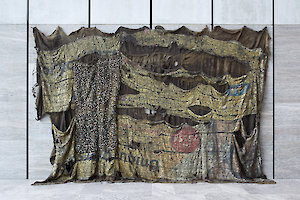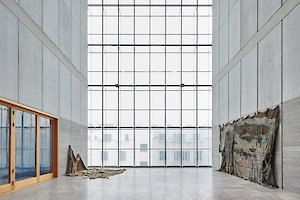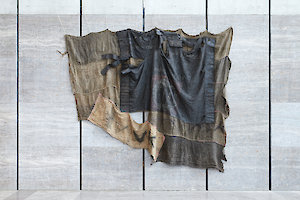Ibrahim Mahama
Ibrahim Mahama
18/09/2021 — 23/01/2022





Ibrahim Mahama (*1987) has become known for large-scale works for which he uses jute sacks. The artist, who was born in Tamale, Ghana, receives his materials in exchange. Thus, he gives new sacks for used ones in which originally goods, mainly cocoa, arrive in the ports of Ghana. Subsequently, the sewing work is done by local workers. Barter and collaborative new production are significant for the understanding of the work.
The jute surfaces are reminiscent of the associated goods. But they also address the traces of the people who produce the jute in Asia, as well as those who participate in packing and transport of the goods in Africa. Finally, they connect with the people Mahama involves in the production of his art - and thus also with us here in Europe.
The bags left their original circulation. Their traces, which are actually lost in the wear and tear of the material, now take on meaning, are allowed to become narrative. This simple yet
powerful gesture is an invitation to raise awareness towards global trade and its mechanisms, in which also we participate. At the same time, Mahama refers to the colonial history of his country, which until independence was known as the "Golden Coast" because of its raw materials.

